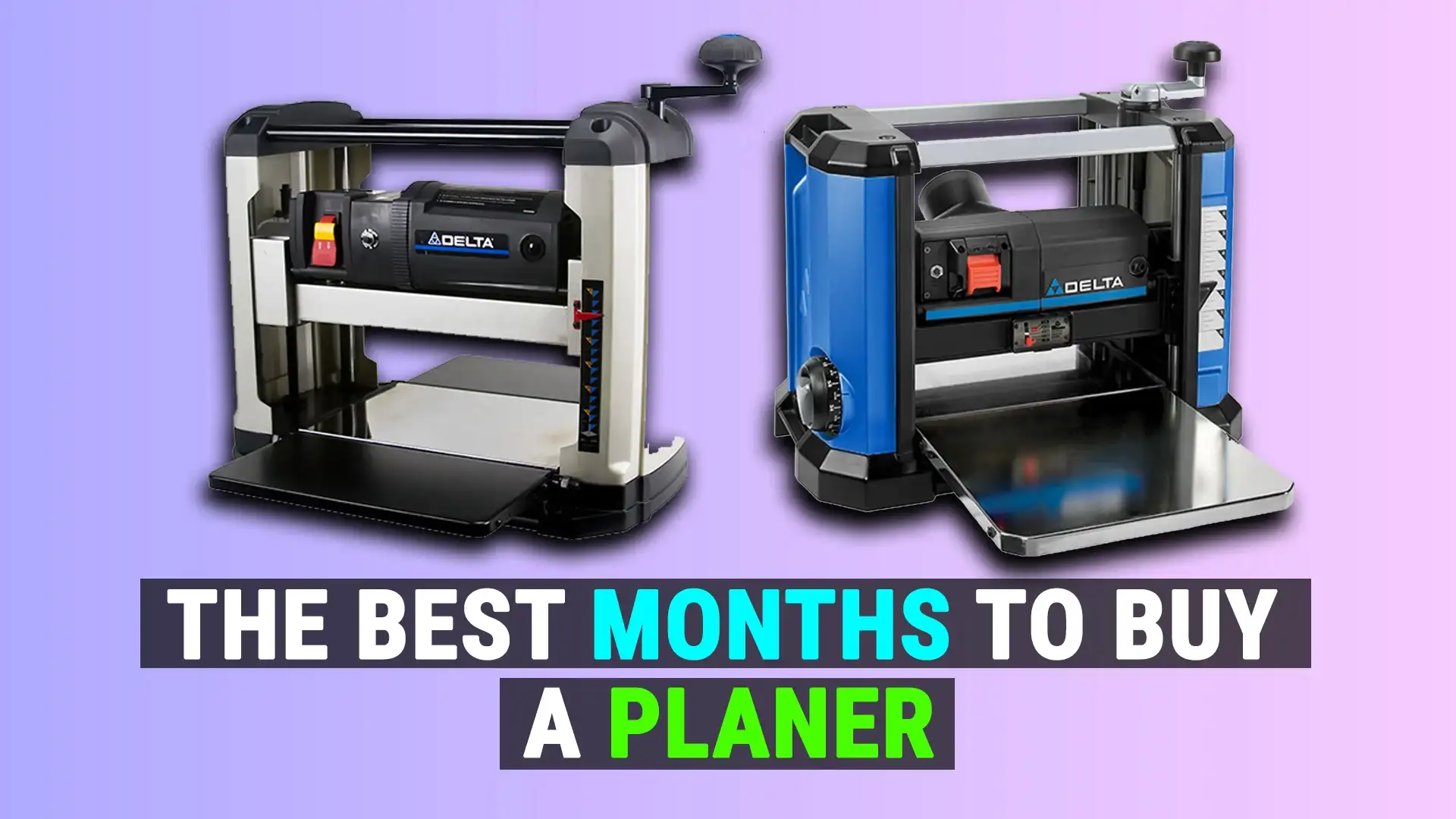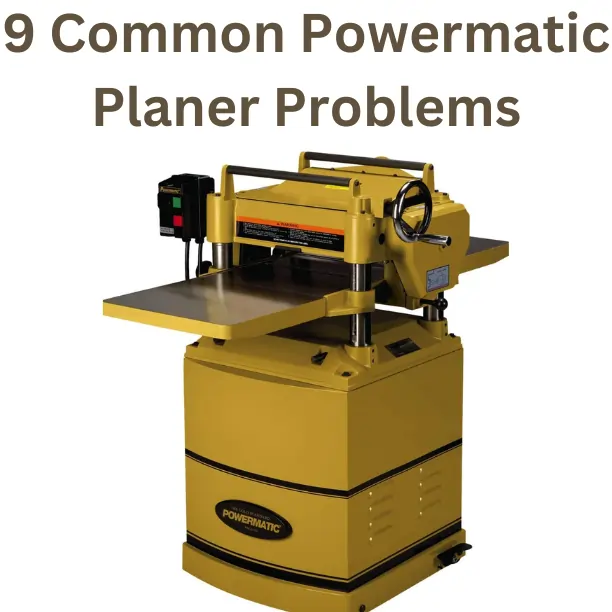Unjammed: Fixing The Planer That Won’t Feed [Expert Solutions]
Tired of your planer constantly jamming and refusing to feed your precious wood? It’s time to spice things up and fix the root cause of your frustration!
Whether you’re a seasoned woodworker or a DIY enthusiast, a planer not feeding can throw a wrench in your project plans.
Fear not, my friend, because in this post we’ll explore the causes and solutions to this pesky problem.
Get ready to sharpen those blades, clean those feed rollers, and unleash the full potential of your trusty planer.
Let’s dive in!
Identifying The Planer Feed Mechanism
Identifying the planer feed mechanism can be a tricky process.
It’s important to have a basic understanding of how the mechanism works and what it looks like in order to identify any potential problems.
The planer is powered by an electric motor that drives two or more sets of blades.
The blades must be sharpened regularly and replaced when they become dull.
If the blades are not sharp enough, the material being fed into the planer may not be cut properly, resulting in uneven surfaces and poor performance.
Additionally, if the blades are damaged or worn down, they won’t provide enough force to push material through the planer.
This can cause excessive strain on other parts of the machine and lead to further damage.
Ultimately, ensuring that your planer’s blades are sharpened and in good condition will help keep your feed mechanism running smoothly.
Common Causes Of Planer Not Feeding
After understanding the planer feed mechanism, it’s important to know what can cause it to malfunction.
One of the most common causes of a planer not feeding is a buildup of sawdust on the feed rollers.
This is because sawdust can accumulate and prevent the rollers from gripping the stock properly or even holding it at all.
If this occurs, the user should take time to clean the feed rollers with a cloth or brush so that they are free of dust and debris.
Another common cause of planer not feeding is when the height adjustment wheel is not set correctly.
Depending on the type of wood being used, planer height needs to be adjusted accordingly in order to provide an optimal cut.
If too high, there won’t be enough pressure from the feed rollers for them to grip the stock; if too low, then there will be too much pressure which may also lead to stock not feeding through.
To avoid this issue, users should adjust their planer height as needed before running any project material through their machine.
The key takeaway here is that proper care and maintenance are essential for keeping a planer running smoothly and avoiding potential problems such as not feeding properly.
Cleaning feed rollers regularly and adjusting planer height according to project requirements will help ensure successful operation each time you use your machine.
Blunt Or Damaged Blades
One of the main causes of a planer not feeding is blunt or damaged blades.
This can occur due to lack of proper planer maintenance, or simply due to wear and tear over time.
If this is the case, the blades will need to be replaced in order for the planer to function properly.
The replacement blades should be of good quality, and they should be sharpened regularly to keep them in peak condition.
It’s important to conduct regular inspections of the blades on a planer as part of maintenance.
Any signs of wear or damage should be addressed immediately, as this will help prevent further damage from occurring and ensure that the planer functions correctly.
It’s also important to make sure that the blades are properly aligned before use, as misalignment can cause further issues with feeding.
Taking these steps will help maximize performance and extend the life of the planer.
To sum up, regular inspection and maintenance are essential for keeping a planer functioning properly and preventing problems with feeding.
Blunt or damaged blades should be replaced with good quality ones which are sharpened regularly, while ensuring that they’re correctly aligned before use will also help improve performance.
Clogged Or Dirty Feed Rollers
It’s possible that clogged or dirty feed rollers are the root of a planer not feeding.
This can happen if dust, sawdust, and other debris accumulate on the rollers.
If it is found that this is indeed the cause, then cleaning or replacing the feed rollers could be a solution.
To confirm this theory, an inspection of the feed rollers should be done to see if there are any signs of dirt or debris build up.
If such build up is noticed, they should be gently cleaned using an appropriate cleaner and a soft brush.
If nothing looks out of place, then it’s possible that the feed rollers have worn down too much for cleaning to help and need to be replaced instead.
Replacing the feed rollers can help ensure optimal performance from the planer.
It’s important to use only high-quality parts so as not to risk further damage or malfunctioning of the machine.
After doing so, it should be tested to make sure that it is working correctly and able to properly feed material through its system once more.
Incorrect Height Adjustment
Often, when a planer won’t feed correctly, it’s because the height adjustment is incorrect.
The blades need to make contact with the wood for the machine to work properly.
If the blades are set too high, they will not cut into the wood and the planer won’t feed.
Likewise, if the blades are set too low, they can hit the bed of the planer and cause excessive strain on its motor.
To avoid this issue, users should make sure that their blades are within 1/32 of an inch from the bed of their planer.
Sharp blades will also help ensure a smooth cutting experience.
If your blades become dull or blunt over time, they won’t be able to effectively cut into your materials.
It’s important to regularly inspect and sharpen your blades to make sure that they’re in peak condition before using your planer.
Replacing worn or damaged parts can also prevent your machine from malfunctioning due to incorrect blade height.
Taking these precautions can help ensure that your planer works properly and efficiently on every job.
Inadequate Motor Power
Finally, inadequate motor power is another potential cause of a planer not feeding.
If the planer’s motor is too weak to feed the material through, it will only get stuck and not move forward.
Here are 4 solutions to this issue:
- Upgrade the motor power.
- Use a planer with more powerful blades.
- Ensure that the material being fed into the planer is soft enough for it to handle.
- Make sure all other parts of the machine are in good working condition as this can also affect how much power it has available for its operation.
Ultimately, if you experience a planer not feeding due to inadequate motor power, then it may be necessary to upgrade your machine’s motor or look into machines with more powerful motors and blades that can better handle your material needs.
Inadequate motor power can be a tricky problem, but if addressed correctly, you should have no problems getting your planer back up and running properly again!
Sharpening Or Replacing Blades
If a planer won’t feed, it could be due to dull blades.
Dull blades can cause the wood to bind or slow down the feed rate, as the wood is not being cut as quickly or as effectively.
To improve performance, either sharpen or replace the blades.
Sharpening should be done with a diamond file and involves removing any nicks and burrs from the blade.
If sharpening does not help, then replacing the blades may be necessary.
Blades should be chosen based on the type of wood being cut.
The correct type of blade will ensure smooth cutting and optimum performance from your planer feed mechanism.
Cleaning And Replacing Feed Rollers
Now that the planer blades have been sharpened or replaced, it’s time to address why the planer isn’t feeding.
There are two main causes of a planer not feeding: dirty feed rollers, and worn-out feed rollers.
To ensure proper operation of the planer, it is important to keep the feed rollers clean and in good condition.
Here are a few steps for cleaning and replacing feed rollers:
If these steps are followed routinely, they can help prevent future issues with a planer not feeding properly.
The bottom line is that keeping the feed rollers clean and in good condition is essential for optimal performance of a woodworking planer.
Adjusting The Planer Height
Adjusting the planer height is like finding a needle in a haystack – it’s not always easy.
Fortunately, there are a few steps you can take to prevent your planer from not feeding.
First, make sure the rollers that feed the wood into the planer are properly set.
If they’re too low, the wood won’t be able to move through the machine.
Second, check for any blockages in the feeder.
If something is clogging up the works, it’ll cause problems with how much material enters the planer.
Finally, adjust the depth-of-cut knob so that it’s just right – too high and your planer will struggle to do its job; too low and it won’t feed at all.
With these simple adjustments, you can get your planer back on track in no time!
Upgrading To A More Powerful Motor
Having adjusted the planer height, the next step is to consider upgrading to a more powerful motor.
There are several advantages to doing this.
Firstly, a more powerful motor produces smoother, more accurate cuts and can handle tougher stock.
Secondly, it can cut deeper into thicker material for increased accuracy and precision.
Finally, it will reduce the workload on the planer itself and increase its longevity.
A more powerful motor may also help with feeding issues if they are caused by poor power delivery or an underpowered motor.
It’s important to check the specifications of your current planer to ensure that you choose a compatible motor that fits within the physical confines of your machine and provides enough power for your needs.
Installing a new motor may require some additional wiring and adjustments, so it’s important to read any instructions carefully and take all necessary safety precautions before attempting any repairs or modifications yourself.
Conclusion
In conclusion, planers can be a great tool for woodworking projects.
Unfortunately, if the feed mechanism isn’t working correctly, it can be very frustrating.
Thankfully, most of the common causes of a planer not feeding are easy to identify and fix.
With a little bit of patience and knowledge, anyone can successfully repair their tools and get back to work.
It’s amazing what a difference sharp blades and clean rollers make when it comes to getting your planer working again.
A sharp blade will ensure the wood is cut properly while clean rollers will help prevent clogs or jams in the machine.
I found that upgrading to a more powerful motor also made a big difference when it comes to avoiding feed problems with my planer.
In summary: by understanding how your planer works, sharpening or replacing its blades, cleaning and replacing its feed rollers, adjusting its height correctly and upgrading its motor if needed, you’ll be able to tackle any feeding issues you have with your planer like an expert.


